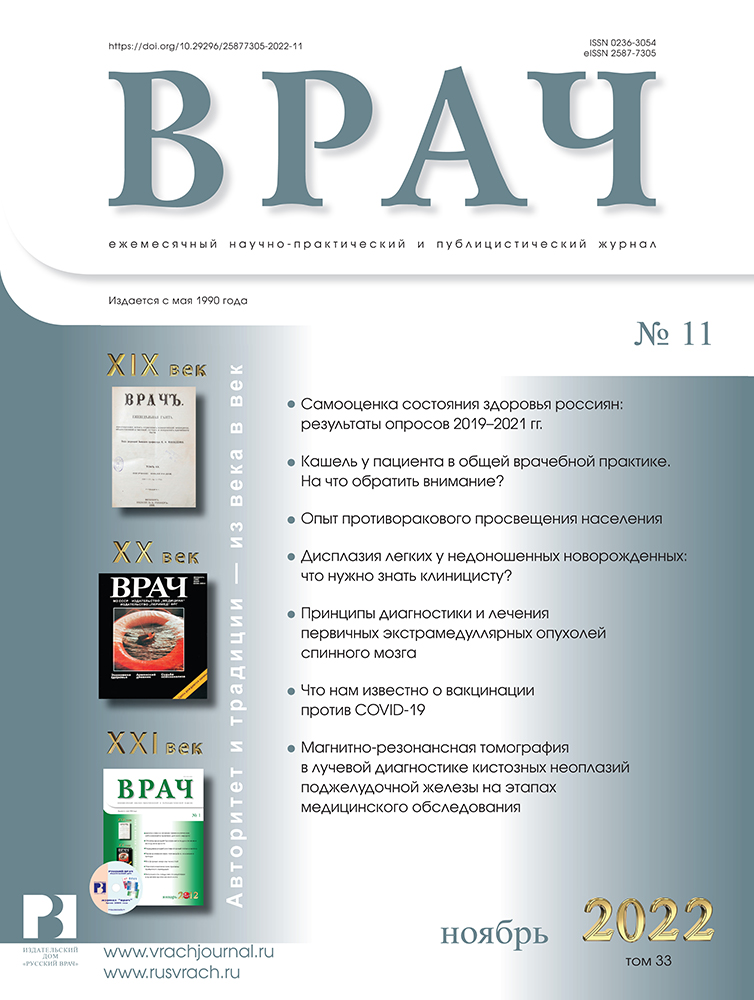Visual analyzer lesions and approaches to treating ophthalmic syphilis in patients with latent syphilis
- 作者: Abuamreih Ala Nu Man A.1, Gadzhimuradov M.N.1, Muhamed Nur N.A.2, Dadaev M.M.3
-
隶属关系:
- Dagestan State Medical University, Ministry of Health of Russia
- I.Sh. Ismailov Center for High Technology Medicine
- Republican Dermatovenereologic Dispensary
- 期: 卷 33, 编号 11 (2022)
- 页面: 67-70
- 栏目: From Practice
- URL: https://journals.eco-vector.com/0236-3054/article/view/321289
- DOI: https://doi.org/10.29296/25877305-2022-11-13
- ID: 321289
如何引用文章
详细
Almost all eyeball and optic nerve structures are secondarily involved in the pathological process in syphilitic infection. Ophthalmic syphilis is manifested by uveitis, panuveitis, retinal angiopathy, neuritis, optic nerve demyelination and atrophy, necrotizing scleritis, and keratitis.
Objective. To study the forms of damage to the organ of vision in syphilis and the results of their specific treatment.
Subjects and methods. The investigation enrolled 158 patients with latent syphilis. The patients were divided into 4 groups according to the approaches to therapy. Enzyme immunoassay, passive hemagglutination assay, and a set of serological tests were used to estimate the serum levels of anti-Treponema pallidum antibodies in all the patients. To examine the organ of vision, the patients underwent ophthalmoscopy, biomicroscopy, color (red, white, and green) perimetry tests, optical coherence tomography, and critical flicker fusion frequency measurements.
Results and conclusion. The organ of vision is involved in the infectious process in syphilis, which is manifested by the development of uveitis, scleritis, neuritis, optic nerve atrophy, and anterior ischemic neuropathy. Specific penicillin therapy used in the treatment of neurosyphilis has been shown to be effective for organ of vision pathology associated with early latent syphilis. Eye analyzer lesion can be the manifestation of the latent forms of syphilis, which may be recommended as a screening criterion for selection of the patients to be examined for anti-Treponema pallidum antibodies. For effective therapy, ophthalmic syphilis must be detected in the first 2 years of infection, as there are irreversible eye analyzer lesions in the long-term persistence of Treponema pallidum in the macroorganism.
全文:
作者简介
A. Abuamreih Ala Nu Man
Dagestan State Medical University, Ministry of Health of Russia
编辑信件的主要联系方式.
Email: gabenu@mail.ru
Associate Professor
俄罗斯联邦, MakhachkalaM. Gadzhimuradov
Dagestan State Medical University, Ministry of Health of Russia
Email: gabenu@mail.ru
MD
俄罗斯联邦, MakhachkalaN. Muhamed Nur
I.Sh. Ismailov Center for High Technology Medicine
Email: gabenu@mail.ru
Candidate of Medical Sciences
俄罗斯联邦, MakhachkalaM. Dadaev
Republican Dermatovenereologic Dispensary
Email: gabenu@mail.ru
俄罗斯联邦, Makhachkala
参考
- Klinicheskie rekomendatsii. Sifilis. Rossiiskoe obshchestvo dermatovenerologov i kosmetologov. M., 2020; 102 s. (in Russ.).
- Torshina I.E., Mogilevtsev V.V., Lugovaya A.A. On a problem of syphilitic damage of the eye. Vestnik oftal'mologii. 2011; 127 (1): 52–5 (in Russ.).
- Johnson K.A., Burghardt N.O., Tang E.C. et al. Measuring the Impact of the COVID-19 Pandemic on Sexually Transmitted Diseases Public Health Surveillance and Program Operations in the State of California. Sex Transm Dis. 2021; 48 (8): 606–13. doi: 10.1097/OLQ.0000000000001441
- Rokitskaya V.N., Safina F.G. Lesions of eyes at various forms of the syphilis. Practical medicine. 2009; 5: 81 – 3 (in Russ.).
- Akovbyan V.A., Prokhorenkov V.I., Sokolovskii E.V. Infektsii, peredavaemye polovym putem. M.: Mediasfera, 2007; 742 s. (in Russ.).
- Krasnoselskikh T. V., Sokolovsky E. V. Neyrosifilis: Neurosyphilis: unsolved problems and unlearned lessons (part I). Sovremennye problem dermatovenerologii, immunologii i vrachebnoy kosmetologii. 2011; 5 (18): 5–11 (in Russ.).
- Krasnoselskikh T. V., Sokolovsky E. V. Neurosyphilis: unsolved problems and unlearned lessons (part II). Sovremennye problem dermatovenerologii, immunologii i vrachebnoy kosmetologii. 2011; 6 (19): 7–11 (in Russ.).
- Okhotsimskaya S.A., Sogreeva E.N., Lavrov A.Yu. et al. Sifiliticheskii uveit. Vestnik oftal'mologii. 1998; 3: 52–4 (in Russ.).
- Sahin O., Ziaei A. Clinical and laboratory characteristics of ocular syphilis, co-infection, and therapy response. Clin Ophthalmol. 2015; 10: 13–28. doi: 10.2147/OPTH.S94376
- Ozturk-Engin D., Erdem H., Hasbun R. et al. Predictors of unfavorable outcome in neurosyphilis: Multicenter ID-IRI Study. Eur J Clin Microbiol Infect Dis. 2019; 38 (1): 125–34. doi: 10.1007/s10096-018-3403-7
- Shaposhnikov O.K. Venericheskie bolezni. Rukovodstvo dlya vrachei. 2-e izd. pererab. i dopoln. M.: Meditsina, 1991; 544 s. (in Russ.).
- Oliver G.F., Stathis R.M., Furtado J.M. et al. Current ophthalmology practice patterns for syphilitic uveitis. Br J Ophthalmol. 2019; 103 (11): 1645–9. doi: 10.1136/bjophthalmol-2018-313207
- Zalevskaya O.V., Vazhbin L.B., Loseva O.K. et al. Syphilis of the nervous system in patients treated for syphilis in the past. Klinicheskaya Dermatologiya i Venerologiya. 2010; 8 (3): 76–81 (in Russ.).
- Kyleshov I.V., Lin V.M., Kiriutsov O.M. et al. Eye lesion of syphilis (a review). Dermatovenerologiya. Kosmetologiya. Seksopatologiya. 2011; 1 (4): 102–9 (in Russ.).
- Paulraj S., Ashok Kumar P., Gambhir H.S. Eyes As the Window to Syphilis: A Rare Case of Ocular Syphilis As the Initial Presentation of Syphilis. Cureus. 2020; 12 (2): e6998. doi: 10.7759/cureus.6998
- Bondarevskii Ya.I., Sautina E.A., Sopova O.K. Osobennosti porazheniya organa zreniya pri rannikh formakh sifilisa. Vestnik dermatologii i venerologii. 2004; 1: 17–22 (in Russ.).
补充文件









